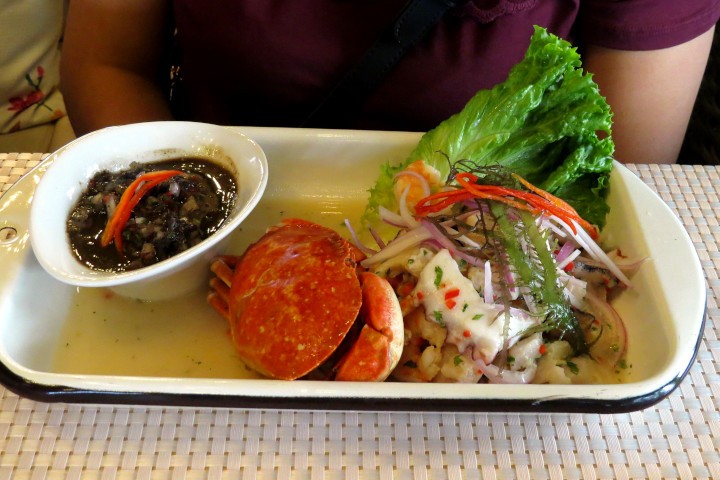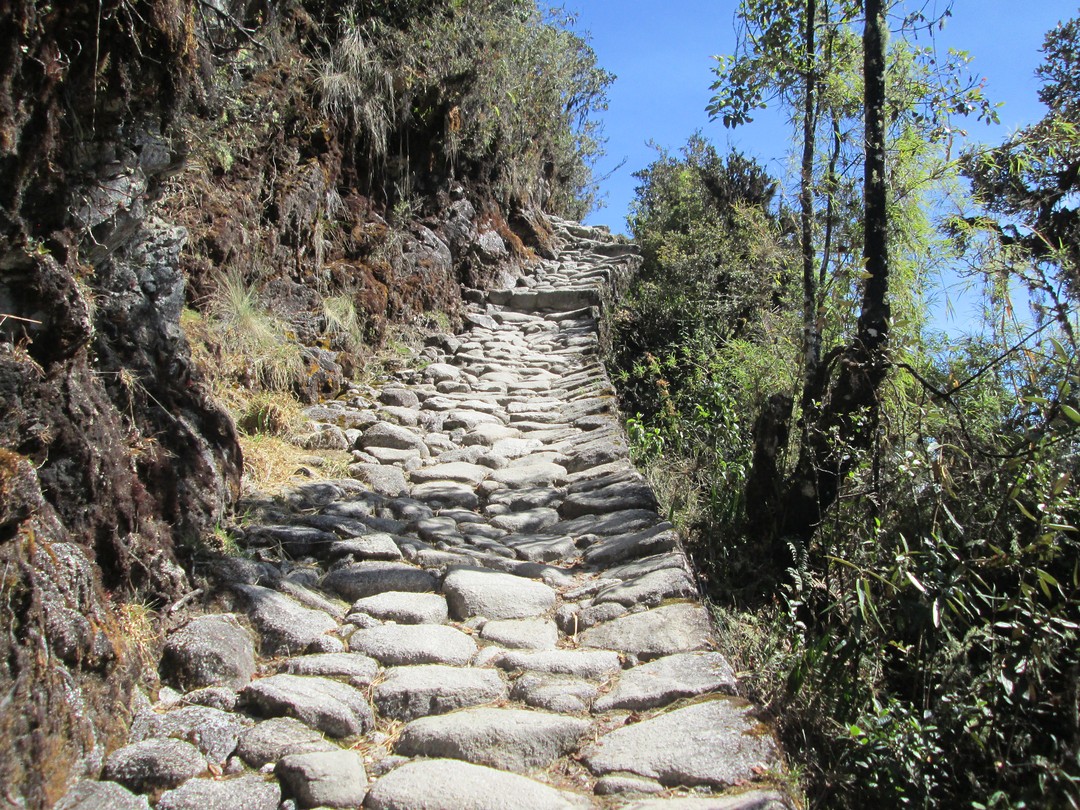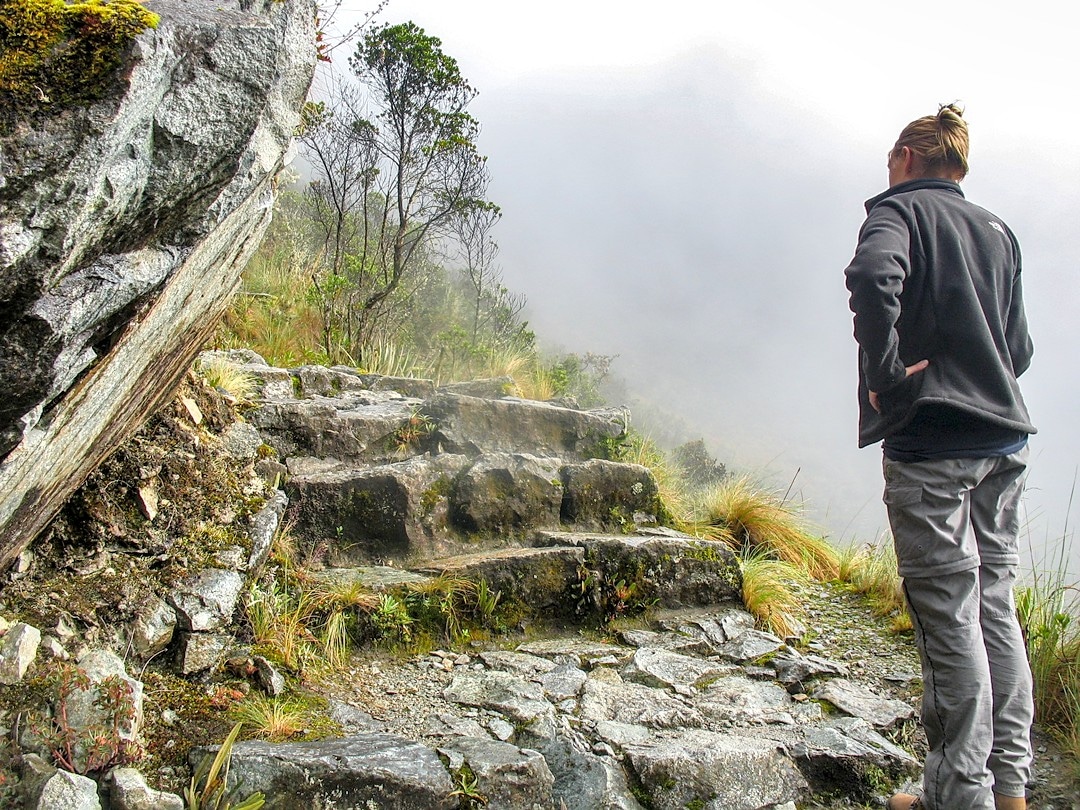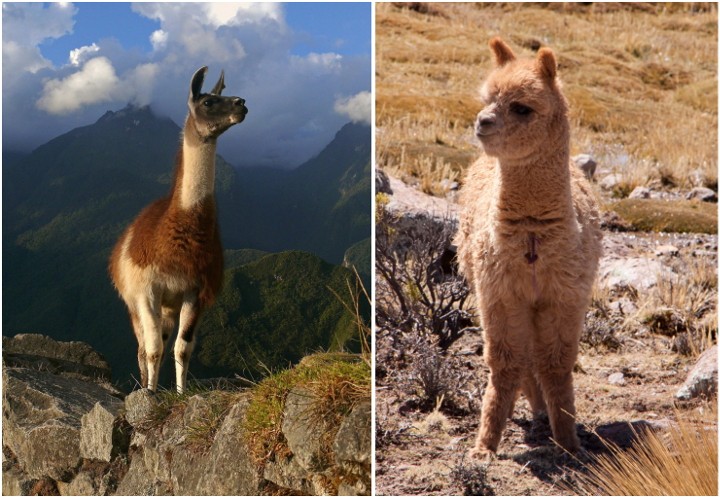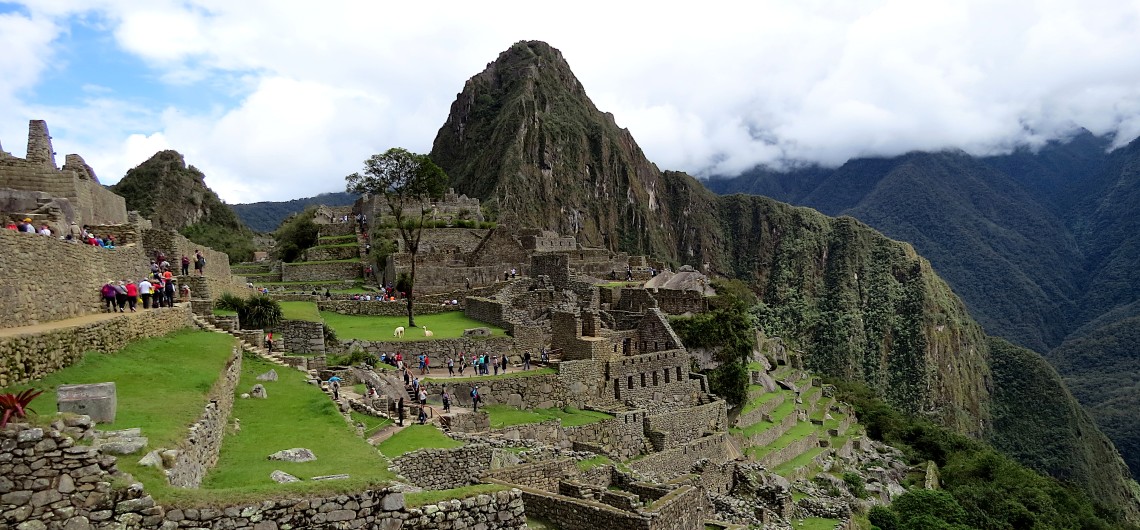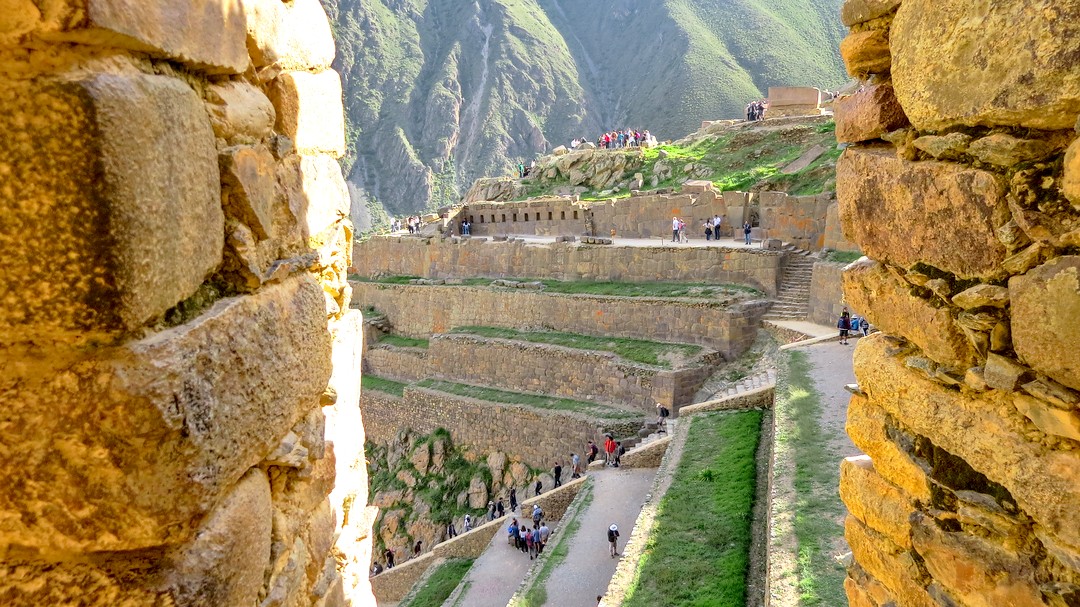There is a reason why “hiking the Inca Trail” is a frequent feature on many travelers’ wish-lists and top-10s. It combines spectacular views of the Peruvian Andes with a rare glimpse into the remarkable past of the people who carved a lasting impression on the landscape and culture of the region. It is an extraordinary and challenging journey that rewards its pilgrims with one of the world’s most legendary ancient cities: Machu Picchu. Are you ready to explore the Inca Trail? Here’s a little helpful advice to guide you on your hiking adventure.
Do
- plan in advance
- exercise regularly before your Peru trip
- your homework
- travel well
- pack smart
Don’t
- disregard the altitude (but don’t fear it)
- forget your poncho
- be afraid
- take the trek for granted
- panic if passes are sold out
Do
Do plan in advance
In order to protect the trail system, passes are required to hike the Inca Trail. The trail is limited to 500 trekkers a day – which breaks down to about 300 guides/porters/cooks and 200 travelers. This means Inca Trail passes sell out several months in advance, and particularly sell out quickly during peak travel seasons. It is a good idea to plan at least six months ahead during the peak Peru travel months of June, July, and August, as well as the popular holiday season. Keep in mind, the trail is closed annually for the entire month of February for maintenance.
Do exercise regularly before your Peru trip
The hike is generally considered moderate in the trekking world. But, that term is of course very subjective. The entire four day hike is ~ 25 miles so the distances traveled each day are not terribly long. Although it is generally accepted that anyone who is accustomed to hiking and camping (i.e. walking for several hours and sleeping in tents) can hike the Inca Trail, the altitude can make hiking these distances feel about twice as difficult as hiking the same distance at sea level. Combine the altitude with steep ascents and descents and suddenly the trek doesn’t seem so moderate anymore. So while you don’t have to train for a marathon, aerobic exercises like stair stepping, brisk walking, and hiking will absolutely work to your benefit. For those less initiated in the art of camping, a few weekend trips near home are strongly suggested to get accustomed to life in the great outdoors.
Do your homework
Check out online resources such as forums or personal travel blogs – there are plenty of accounts from travelers from all walks of life who have done the Inca Trail and love to share their personal experiences. Talk with a tour operator and ask for references. It can be very helpful to speak with a traveler who has not only hiked the Inca Trail but also traveled with a particular company that you are thinking of traveling with. And speaking of tour operators: make sure you are working with a reputable one.
Do travel well
The park service prohibited independent trekking on the trail in June 2002. Trekkers on the Inca Trail must be accompanied by a professionally qualified and certified guide. This is a good thing; it helps ensure the protection of the trail system, as well as the protection of travelers on the trail. (Example: good camping equipment, radio communications, and emergency first aid including oxygen.)
It also means that most Inca Trail hikers work with a tour operator to plan their trek. Make sure you’re working with a responsible one. A few questions to consider include: Do they provide time to acclimatize before your trek begins? Do they work with local guides? Are their guides trained in responsible travel ethics? Do they limit group size to minimize impact on the environment and local culture? Where do their porters come from and are they compensated fairly? If the price of a trip seems a bit too good to be true, it probably means corners are being cut somewhere – and unfortunately this usually means the burden is on the local staff.
Do pack smart
Packing can be tricky. In general, travelers carry a daypack with items like sunscreen, cameras, and water bottles. Porters will carry all of your other supplies including camping equipment, clothes, sleeping bags, etc. Bring only the belongings that you will need for the trail and leave any unneeded luggage at your hotel in Cusco or the Sacred Valley. The park service has put a cap on the weight each porter can carry (roughly 55 pounds) and this includes your personal belongings, which should not exceed 15 pounds. Choose these 15 pounds carefully.
Weather on the trail can be below freezing at night and a sunny 80s during the day. Conditions can change from mist-covered mornings to brisk afternoon downpours all in one trip. Ask your tour operator for a detailed packing list. But generally, plane to dress in layers and avoid wearing cotton. Also, don’t choose the Inca Trail as the place to break in a new pair of hiking boots. New shoes = blisters. The nights in particular can be quit chilly. Both a good pair of long underwear and a quality sleeping bag will serve you well. Bring your own, or you can rent a sleeping bag in Cusco for about $10 – don’t rent long underwear.
You also might want to consider bringing or renting trekking poles to help with balance on the descents. Either way, remember to cap the tips. Spikes can cause real damage to the ancient stones on this historic pathway. Oh, and be sure to pack money so you can tip your porters, cook, and guide. You’ll discover immediately that they’ve earned it.
Don’t
Do not disregard the altitude (but don’t fear it)
It’s hard to predict who will fall victim to altitude sickness, and who will not. A general rule of thumb: if you’ve experienced it before, you’re likely to experience it again. It is much easier to prevent altitude sickness than to treat it.
Most travelers who hike the Inca Trail first fly into Cusco, which sits at an elevation of 3,400 m or 11,200 ft. (Compare this with Denver, CO at an elevation of 5,280 ft.) It is common for travelers to feel the effects of elevation upon arrival, typically experiencing mild symptoms such as fatigue, headaches, and feeling lightheaded during their first day or two at elevation. Extra days in Cusco and the Sacred Valley are very important to allow time to acclimatize before your trek.
Along with acclimatizing, you should also keep hydrated and take it easy. Many severe cases of altitude sickness are the result of a pre-existing condition that is aggravated by the altitude. It is important to ask your doctor whether or not travel to high altitude is advised, especially if you have a pre-existing heart or lung condition such as high blood pressure, asthma, angina, etc.
You might also want to ask your doctor about prescription Diamox, a diuretic that many travelers swear by to help them adjust to the altitude more readily. This medication is preventative, and should be taken before the onset of symptoms. On the Inca trail, you will be hiking in altitudes ranging from ~ 9,000-14,500 ft. The highest camping spot is ~ 12,000 ft. The elevation of Machu Picchu – the finale at the end of your trek – is 2400 m/7474 ft.
Do not forget your poncho
Sometimes it’s the little things that can have the biggest impact. And for the Inca Trail, a poncho is a perfect example. That $5 garbage-bag-with-a-hood will not only keep you dry, it will cover your daypack, keeping it both dry and easily accessible. Even the fanciest of rain jackets won’t keep your daypack (and that brand new $500 camera and all its bells & whistles that you’re carrying in said daypack) protected from a sudden downpour on the Inca Trail. Your hike takes you into theAndes cloud forest. Even in the dry season, prepare for rain.
Do not be afraid
You can accomplish this trail. Take comfort in the fact that you’ve prepared for your trek. Travelers of nearly all ages, from 8 to 80, tackle this high altitude trek. Whether you make it to Machu Picchu in record time, or you’re the last off the trail – the end reward is the same for everyone who hikes the Inca Trail. Don’t let the packing lists and the physical preparation overwhelm you. The right state of mind (and several weekend day hikes near home) can make all the difference. Mind over matter – it works.
Do not take the trek for granted
With all the hiking, packing, camping, and eating it is easy to let the physical part of this trek overwhelm your experiences on the trail. But let a little reflection in as well. You are hiking on a trail that was constructed in the 15th century. It was designed to be a spiritual pilgrimage, one that honored sacred mountains like Veronica and Wakaywilka en route. You are exploring a mere fraction of the trail-system created by the Inca Empire; the Incas created hundreds of miles of trails stretching from Ecuador to Chile to connect their empire. Remember this, and appreciate the engineering skill required to create miles upon miles of intricate and paved trail-systems. Appreciate the awe-inspiring landscape of the Andes. Appreciate the charismatic pulse this trail possesses that continues to beckon pilgrims from around the world. By all this, the trail has earned its legendary status.
Do not panic if passes are sold out
So you tend to be a little spontaneous – planning ahead isn’t your style and Inca Trail passes are sold out for your travel dates. Don’t panic. The Incas built an estimated 25,000 kilometers of roads. To put it simply there are a lot of “Inca Trails” throughout the region. While you won’t be able to hike the classic Inca Trail without a pass, there are excellent alternatives. One of my favorites is the Choquequirao trek. The ancient city of Choquequirao is often referred to as Machu Picchu’s sister city and is only accessible by foot. This trail is less developed than the classic trail, but the environment and scenery are very similar to the Inca Trail since both treks are in the same region.
Another great option is the Cachiccata Trek. This cultural trek includes a visit to the Inca temples of Chokekillka and Intiwatana and visits local Peruvian communities. It’s an easier, shorter option with hiking at lower altitudes. All these alternatives are more secluded and offer less-traversed trail – encountering other travelers outside your group will be few and far between. Keep in mind that these alternative treks do not allow you to hike directly into Machu Picchu. This celebrated characteristic is reserved strictly for the classic Inca Trail.
Regardless of the list of dos and don’ts that you need to keep in mind when planning this historic Inca Trail hike, my best advice is to simply make it happen. Countless well-traveled people have returned from this experience saying it was the best in their life, and not to be matched any time soon. Make it yours as well. Do your research and plan well and in advance, and you will be on your way to an amazing Peru tour experience.

